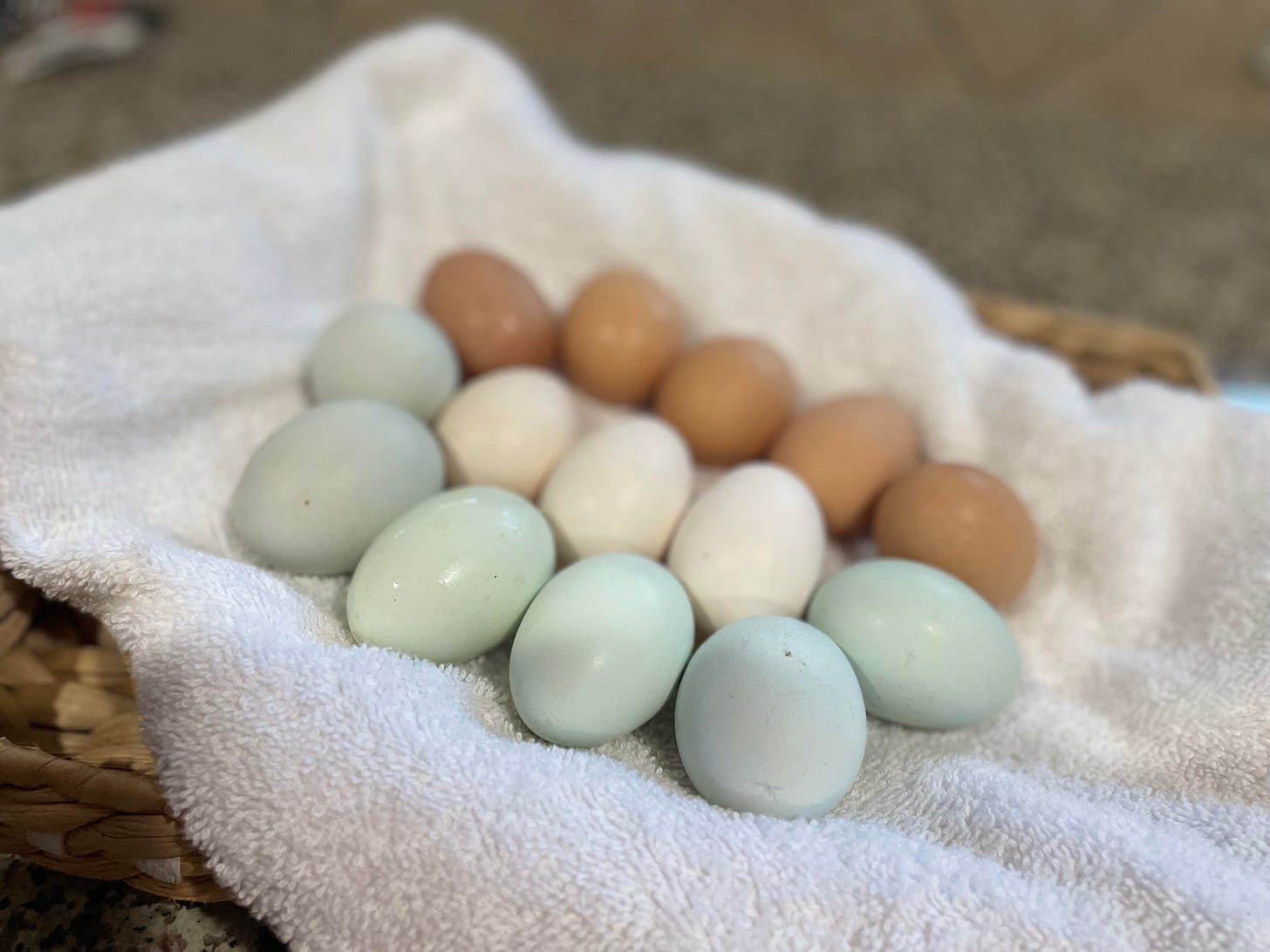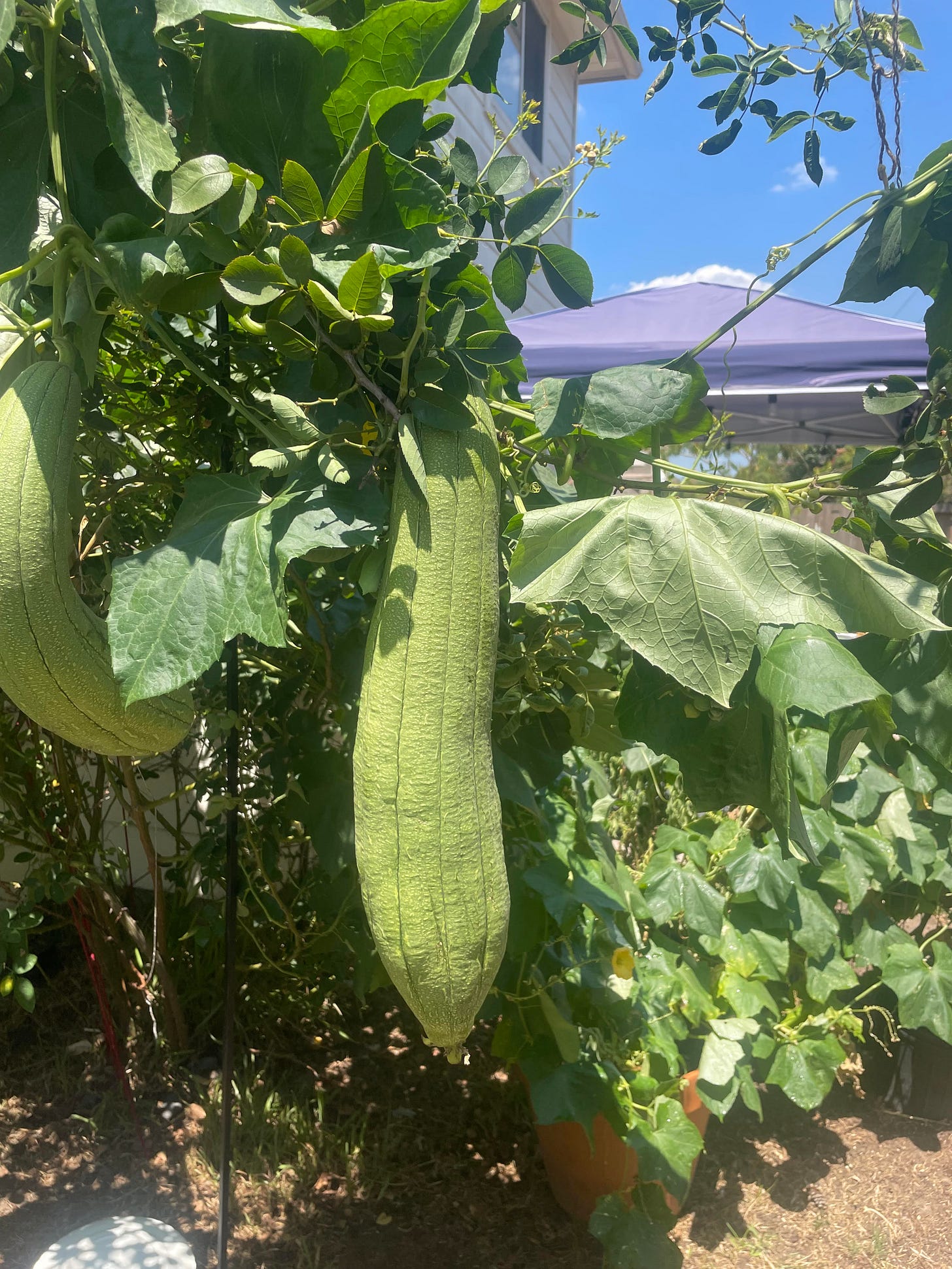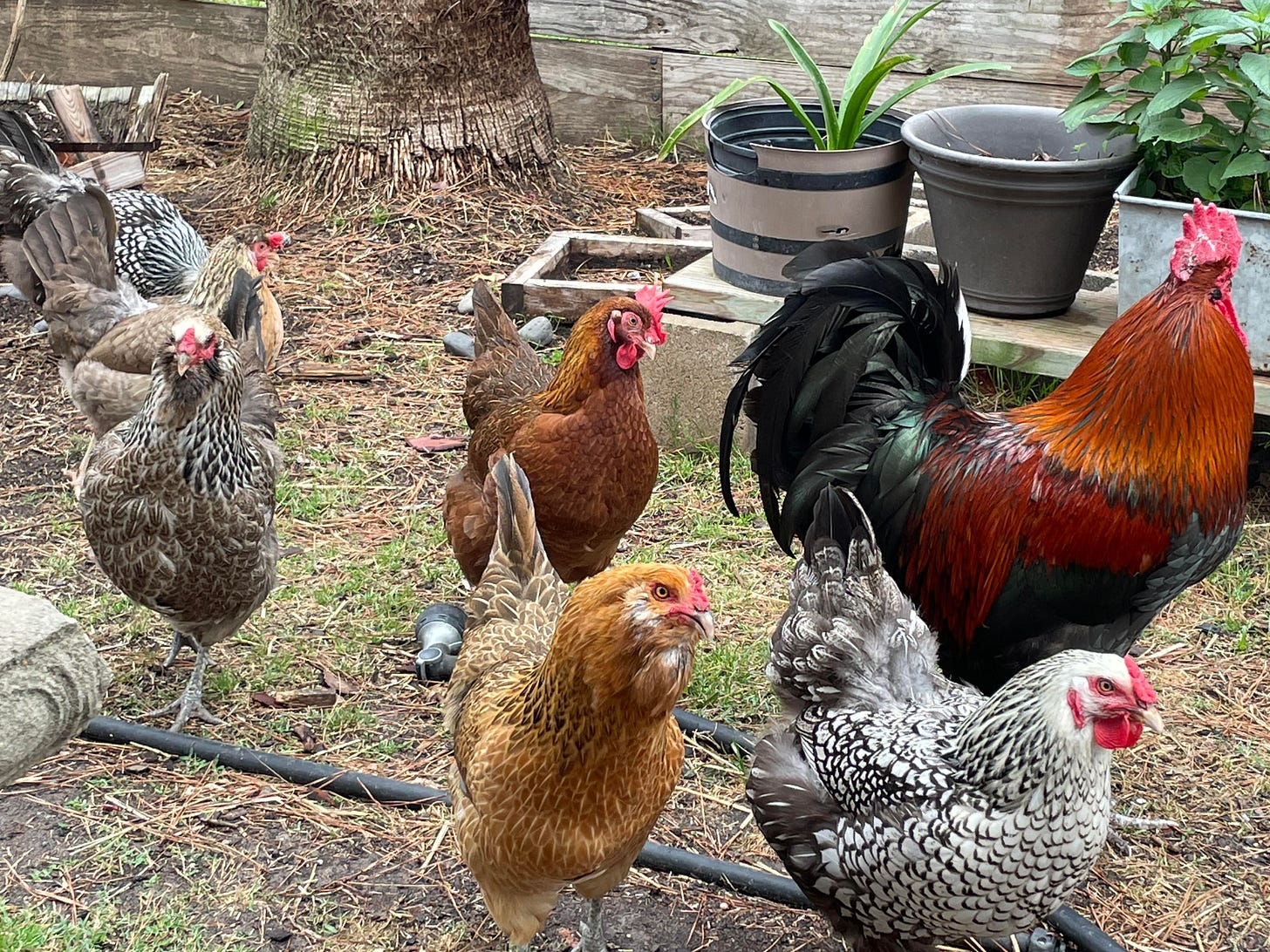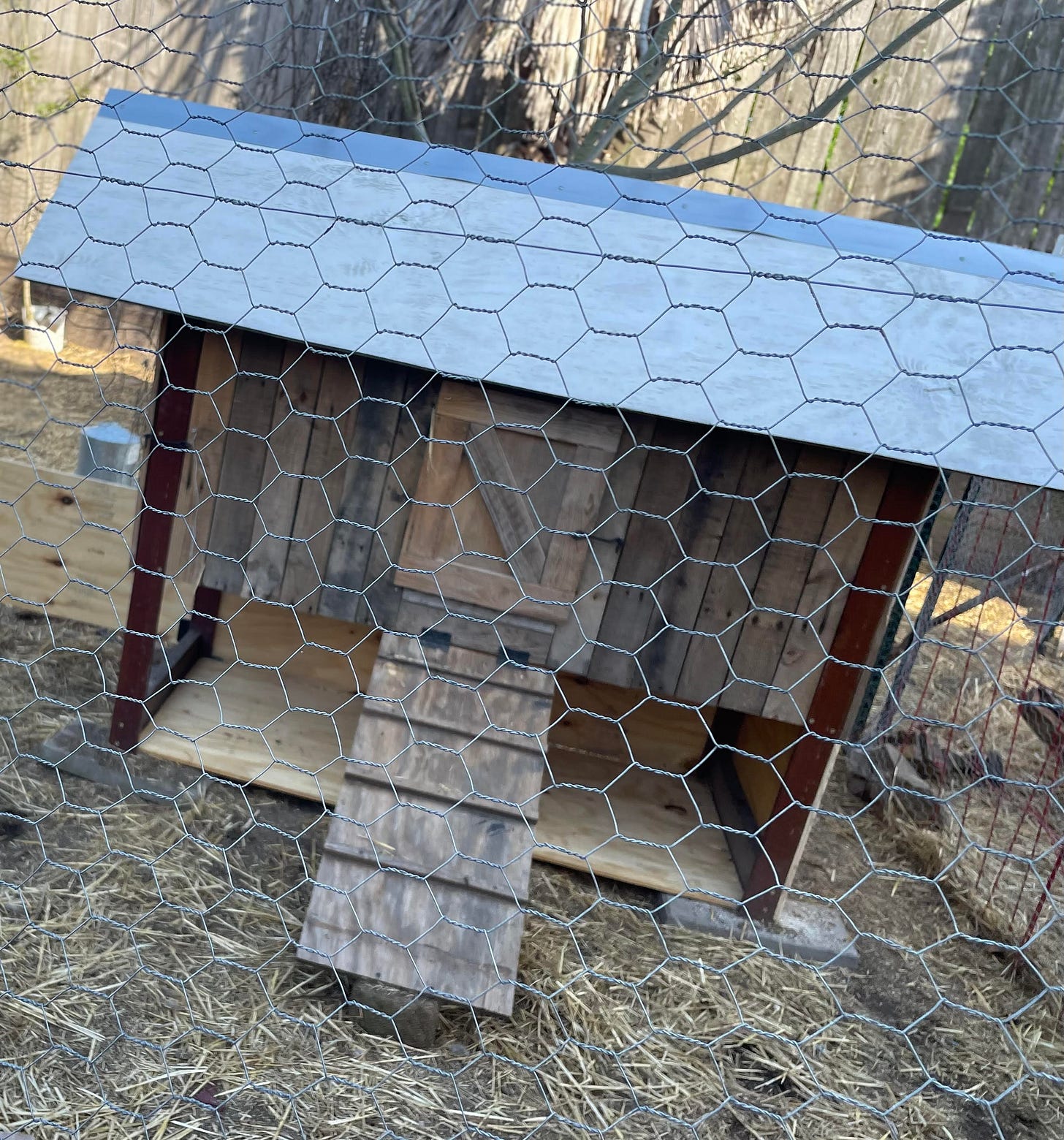5 Tips for Rapidly Increasing Food Independence
Plus a hot tip from the Hot Pants Farming Club
Given the not-so-covert assault on our global food systems and the covey of philanthropaths involved, it’s clear that we must relearn how to feed ourselves. Only a generation or two ago, people knew and practiced far more self-sufficient lifestyles, especially when it comes to food.
I believe almost all of us who are “awake” understand this, but many aren’t sure how to go about it, or maybe they simply think it’s too late. I’m here to tell you it is not, it is never, too late by sharing some of my best tips for getting started.
Please consider buying me a coffee via the link below. As you probably know, it’s not really for coffee. Your generous donation gives me the boost I need to keep on growing!
5 Tips for Rapidly Increasing Your Food Independence
Cultivate Fast Growing Vegetables. Some examples of these include:
arugula (rocket), beets, broccoli, cauliflower, carrots, brussels sprouts, radishes, and kale. There are many more and the ones I list here are typically planted in autumn, depending on your growing zone. Fast growing examples for spring include cherry tomatoes, cucumbers, summer squash, okra, eggplant, various peppers, and many more.
Side note: Our luffa vine is just about as out of control as democrat-run cities at this point! Just sayin.
You don’t have to have raised beds or plant them in rows, if you don’t have room or time. In this case, consider using pots, growing bags, or any vessel that will accommodate the necessary amount of soil. If you’re concerned you don’t have enough sun, or if you live in an apartment, designate an area to grow inside using grow lights. Grow bags come in large sizes and cost much less than buying typical pottery. We don’t use them, but know several people who do with great success. Plus, an important advantage of growing in pots and grow bags is portability.
But, if you do have a yard, it might be time to wage a ‘war on grass.’ We did! This allows you to maximize even a small yard to grow delicious food.
Raise poultry if at all possible. If you live in the suburbs, no problem! You can still raise a few chickens. In my opinion, chickens are easiest for beginners. You can raise them for their eggs, or for their meat, or both.
Currently, we only raise layer chickens, though some of ours are dual-purpose birds. I can write more about the differences between birds kept for eggs and those kept for meat in another post. For now, we’ll stick to layer chickens.
We have 11 hens and one rooster who’s about as unhinged as a tranny Antifa member!
With only three chickens, you can get anywhere from 10 to 21 eggs per week. You’ll get more consistent laying in the spring and summer because chickens need a certain amount of daylight hours to lay consistently. They still lay in autumn and winter, but not as much. They need the break!
We raise ducks as well and I’m eager to start raising quail this spring — I just haven’t quite convinced the DS yet (but, make no mistake, I will). People also raise turkeys, geese, guineas, and more, but it takes a bit more space for these birds.
Keep in mind that you’ll need to arrange for a trustworthy person to care for your birds if you go out of town. It only takes a few minutes in the morning and late afternoon.
You’ll obviously need a chicken coop. You can buy one (expensive and usually sub-par quality) or make one yourself. DS made this one in a Saturday afternoon.
Store high-calorie foods with a long shelf life. This involves saving bulk bags of rice and beans (separately) in 5-gallon buckets. You’ll need a few supplies, but it’s really affordable and easy. See my step-by-step post here. You can also grow potatoes, which aren’t quick, so that’s why I didn’t mention them above, but they pack a lot of calories and store in a cool environment for quite a while.
Preserve surplus foods. You can do this with excess food you’ve grown as well as organic produce from the grocery store. This is a fantastic way to keep off-season foods on hand to add variety to seasonally available fruits and vegetables. Depending on what you want to can (preserve), you’ll need either a water bath canner, a pressure canner, or both. For example, if you’d like to save a homemade beef stew, you’ll need a pressure canner, but you can pickle many vegetables with a water bath canner.
Here’s a pic of DS making the best ever pasta sauce for canning. We canned about two cases of it this season. Yes, he’s often topless. It’s hot up in here this time of year. Besides, he doesn’t know I’m posting this photo.
Goats, pigs, rabbits. Not everyone has the room for this level of animal husbandry. We definitely don’t have it here, but there’s plenty of room on our property in Idaho. I’ll have a learning curve, but the DS is a fine and patient (usually) teacher, so I’m sure I’ll be able to handle it.
You can get delicious milk from goats as well as meat, depending on the type you raise. Pigs — need I say more? Bacon! I know it’s more than bacon, but that’s my favorite part. I’m not as keen on raising adorable little rabbits for meat, but I’ve been told we’re going to do so.
Don’t worry if you can only grow one or two vegetables, or if you only want to keep some chickens without growing food. Make friends with like-minded people and trade some of what you cultivate with something they have. A great place to meet people for bartering and exchanging tips, etc., is your local farmer’s market. We often trade eggs for local honey or for raw milk.
Pro Tip from the Hot Pants Farming Club
This tip isn’t about food independence, but I’m sharing it because it’s so important. Given the current state of our healthcare system, it’s crucial that you have a small stockpile of various necessary medications. Your family doctor most likely will not prescribe things like Ivermectin, hydroxychloriquine, antibiotics, and other just-in-case medications.
So what’s a wide-awake citizen to do?
Get on Telegram and start a chat with @UrbanMedex. Tell him how you found him and what you need. He’ll add you to their unmonitored main profile where they list available medications. We’ve been using them for months and the products are 100% authentic and are at the best prices I’ve seen anywhere.
Please note: I am not a physician or healthcare provider of any kind. I am supplying this information as a courtesy because we have found it so very helpful. It is not medical advice. Please consult a qualified healthcare professional before taking medication or supplements from Urban Medex or anywhere else.
As always, if you have any questions about growing or how to preserve foods, please let me know.











Nicely written. Appreciate you and all you bring to the table. Xoxo.♥
A slow grow for humid shady areas - mushrooms. I have shiitake growing on hickory and oak logs. Not all of my logs worked but enough did to give me quite a few when it has been rainy. NorthSpore.com has helpful info and supplies. Logs that took will last about three years of harvest but it takes winter or more before the first harvest.